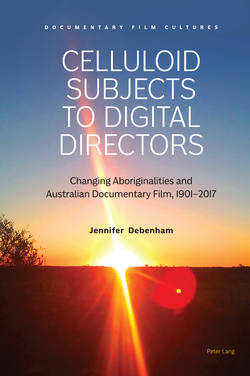Читать книгу Celluloid Subjects to Digital Directors - Jennifer Debenham - Страница 14
На сайте Литреса книга снята с продажи.
Aboriginalities
ОглавлениеEach film signposts shifts in how Aboriginalities were understood by both Aboriginal people and non-Aboriginal Australians. Bidjara/Iman descendant and public academic Marcia Langton’s incisive observation that “‘Aboriginality’ is remade over and over again in a process of dialogue, imagination, representation and interpretation” provides an important framework for the study. “Both Aboriginal and non-Aboriginal people create ‘Aboriginalities’” in an infinite array of intercultural experiences.2 Recognising that Aboriginality is not static underlines the importance of these modalities in which documentary films play a significant role. Indeed, Langton’s appraisal of the social and cultural dynamics in her description of Aboriginality embraces the similar dynamics of media ecology and the emotional investment inherent in documentary film production used in this study. First let us consider the emotional dynamics inherent in the making of documentary films.
The work of scholar Belinda Smaill (2010) draws attention to the role emotion plays in documentary film production. Traditionally documentary films are associated with what Bill Nichols refers to as “discourses of sobriety” and the genre’s connections with science, education and social responsibility.3 Exploring the importance of the emotions produced by documentary films, which include pleasure, hope, pain, empathy, or disgust, Smaill is interested in how the audience is ←2 | 3→addressed by and how they relate to these emotions. In particular “how emotionality marries with the social project of documentary in ways that make the non-fiction genre a compelling site for understanding how fantasies of self and other circulate through specific textual practices”.4 Recognising these emotions circulate in the public sphere connected as they are with instrumental power structures that include “science, economics, politics, foreign policy, education, religion and welfare”,5 Lauren Berlant argues that “public spheres are worlds of affect”. It is where Jim McGuigan maintains that “popular culture, including television and cinema, offers a mass mediated aesthetic and emotional form of communication that is integral to perceptions of collective life”.6 In synthesising these views, Smaill “indicates that emotion can be thought of not only as a psychical response to particular stimulus, but also as integral to the way subjects experience public spheres at particular historical moments”.7 The films in this study are emblematic of the conditions in which Aboriginality was constructed, negotiated and comprehended in the public sphere, simultaneously driving and reflecting these changes.
Belinda Smaill observes:
Emotions move along with histories of signification and, through this, become associated with and shape relationships with objects such as images and genres, a text and/or the institutions surrounding the text, in systematic ways.8
As the representation of Aboriginal people on documentary film changed, the types of emotional responses and the relationship with Aboriginal people were reshaped by their new images and narratives. Part of the aesthetics were also shaped by changes in technologies; not only those associated with film production but also in the multitude of effects technologies made in everyday life.
←3 | 4→
